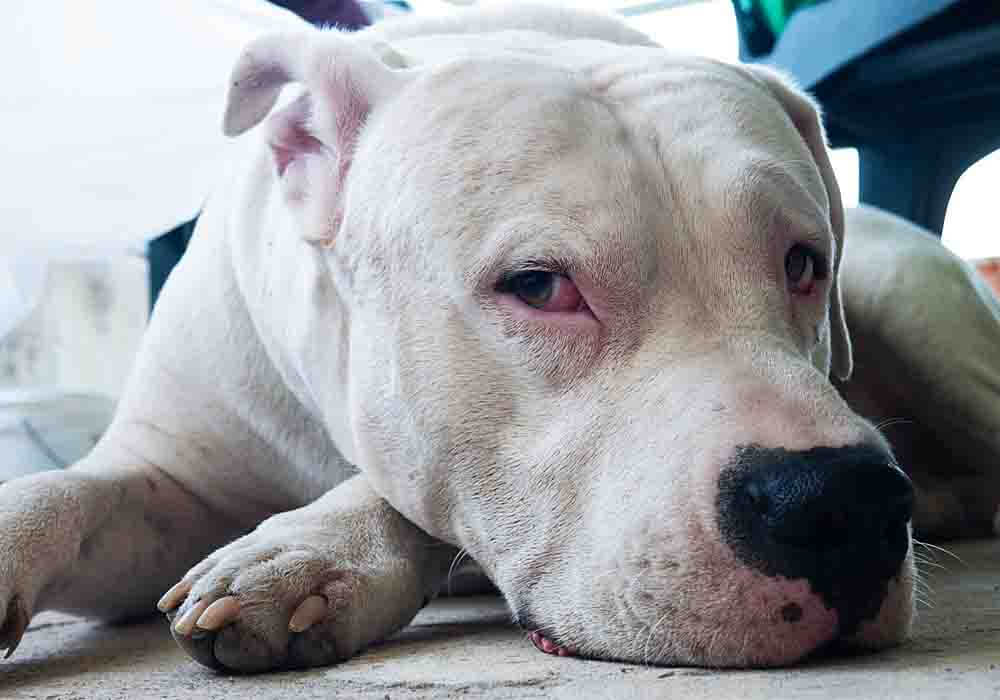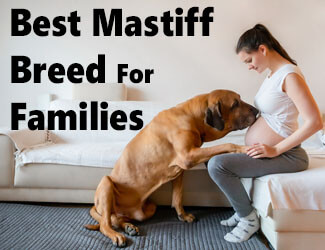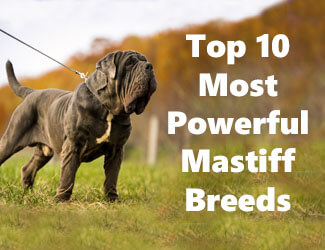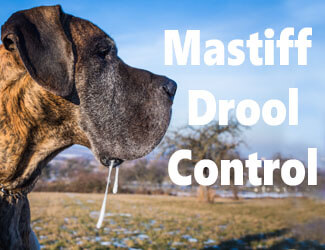Top 23 Facts About Dogo
Argentino
You Always Wanted To Know
by Ken Alden
The Dogo Argentino, also known as the Argentinian Mastiff and the Argentine Dogo, is a dog bred for its massive size, agility, power, and ability to hunt large prey. Despite its large frame and reputation as a “fighting” dog, the Dogo Argentino has been the perfect family dog for decades.
Dogo Argentino Facts...
- They were originally bred to hunt mountain lions and boars
- They drool little compared to their ancestors the Bulldog and Boxer
- They're very intelligent making them easy to train
- Dogo's are banned in several nations. Australia, Iceland and Singapore to name a few
The breed tends to be a loyal and dependable family dog. In fact, that’s one of the reasons this dog breed was developed in the first place.
Here’s Our Top 23 Facts About Dogo Argentino…
Read More Below...
Pro-tip: Ever try lifting a Dogo Argentino? Their weight can hurt not only your back but their joints when they hop down from cars, sofas or even your bed. To protect your back and theirs check out the best Mastiff ramps on Amazon.com now.
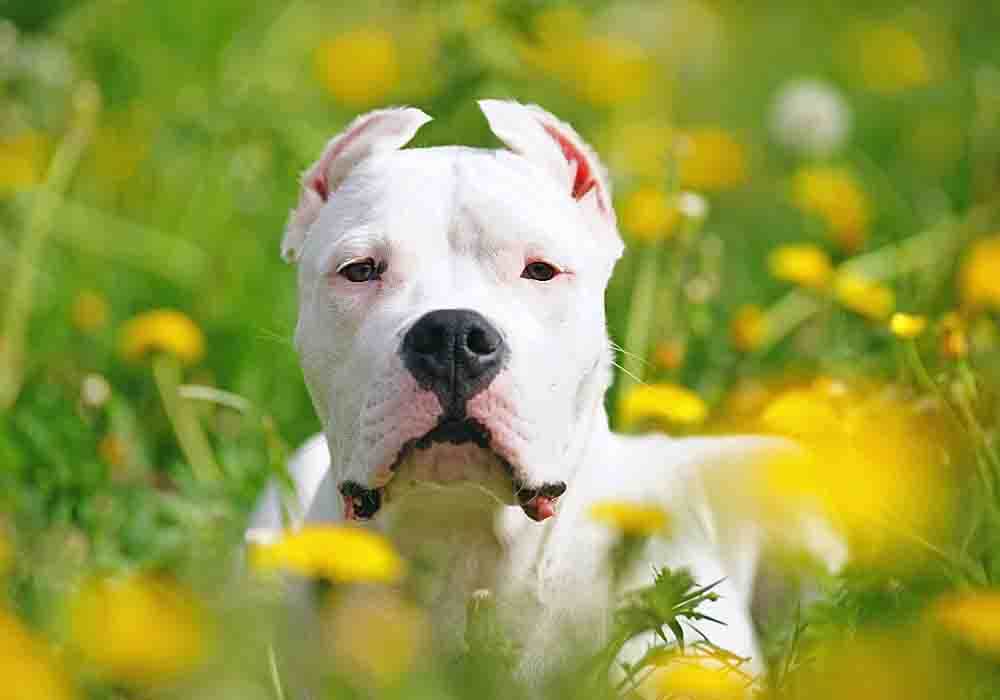
Where Do Dogo Argentinos Come From?
The history of this breed is quite interesting, actually! The breed was developed by an Argentinian doctor by the name of Antonio Nores Martinez in 1928. The doctor wanted to create a dog breed that would be great at big game hunting, but also a loyal family dog as well.
In the process of creating what we now know as
the Dogo Argentino, the doctor crossed several different large breed dogs. It
was clear that he wanted a breed that was physically powerful, agile, and had
an innate hunting ability. Four decades later, the “Dogo Argentino” was
completed.
For a more in depth look at this fascinating breeds history check out this page on our site.
What Are Dogo Argentinos Bred For?
The Dogo Argentino breed was developed to hunt. That’s exactly why some of the world’s largest, most powerful, and best hunting breeds were used to create this brand new breed in 1928. As a result, this breed is an incredibly beefy dog at up to 100 pounds. facts about dogo argentino
But, the “hunting” that this dog was bred for was not simply turkey or deer hunting. This breed was actually developed to hunt large game like mountain lions and boar! In fact, the Dogo Argentino is bred to hunt in packs and work with other dogs while on the hunt for large game.
Yet, the Dogo Argentino was also bred to be a
loyal family dog as well. They’re known to stick close to their family and
protect them when necessary.
What Breeds Make Up A Dogo Argentino?
When initially developing the Dogo Argentino, the Cordoba Dog was used as a reference. This breed, now extinct, was considered a fighting breed in its prime. They were known for being extremely powerful, great at hunting, and courageous.
In addition to the Cordoba Dog, at least nine other dog breeds were eventually mixed into what we now know as the Dogo Argentino. These other breeds include the Irish Wolfhound, Bull Terrier, Boxer, Old English Bulldog, Great Dane, Pyrenean Mastiff, Dogue de Bordeaux, Spanish Mastiff, and the English Pointer.
Together, these breeds give the Dogo Argentino
its massive size, impressive agility, unrelenting power, and unmatchable
stamina.
How Can I Tell If My Dog Is A Dogo Argentino?
It’s very common for this breed to be mistaken for the modern-day pit bull terrier. So, here are some of the key traits of the average Dogo Argentino today!
- A short-haired, completely white coat and possibly a small patch on the head
- A larger mouth with an extremely powerful bite force
- A generally muscular and stocky build
- At least 24 inches in height at the shoulders
- Weighs between 80 to 100 pounds, though heavier isn’t unheard of
- Cropped ears, though this isn’t always the case
For the most part, the distinguishing feature
of the Dogo Argentino is the pure white coat.
Are Dogo Argentinos Good With Other Dogs And Cats?
The Dogo Argentino isn’t the greatest fit for any family that already has animals of their own. Since the breed was designed to be a hunting dog, it’s not unusual for Dogo Argentinos to view smaller dogs, cats, and other pets as prey that they must hunt down and ultimately catch. facts about dogo argentino
Like many breeds, this dog typically
doesn’t do well with other dogs of the same sex. It’s best to have another dog
of the opposite sex if you insist on getting another dog. Just make sure that
you properly socialize them to prevent any mishaps!
Are Dogo Argentinos Aggressive Or Dangerous?
They can be! But, you won’t have to worry too much about aggressive behavior within your own family. This dog is very gentle with its own, as this breed is known for building a deep connection and loyalty to its own family.
Most violent behaviors from this breed are actually out of defense. If they feel as if their family is being
threatened, it’s not unheard of for them to attack a stranger. It’s also very
likely that the Dogo Argentino will be aggressive toward small animals and
other dogs.
We've written an interesting article that goes into greater depth as to whether this dog does have a dangerous or aggressive streak and you can find it here.
Pro-tip: Dogo Argentino anxiety, aggression, destructive chewing, jumping up, fearfulness, and other behaviors can be controlled with the right training program.
Here’s a great course that
addresses these issues along with many other dog training basics: Check it out now!
How Long Do Dogo Argentinos Live?
According to the American
Kennel Club, the average Dogo
Argentino has a lifespan between 9 and 15 years. However, this really depends
on how much daily exercise they’re getting, whether you’re feeding them a
healthy diet, and how proactive you are in preventing health conditions.
Are Dogo Argentinos Good Guard Dogs?
What’s great about this breed is that it can be both a guard dog and a family pet. Their unrelenting loyalty and desire to protect their families are what makes them incredible guard dogs. Their goal is to keep an eye on their property and their families!
The greatest issue with them being a guard dog
is teaching them the difference between “stranger” and “intruder.” Despite
their ability to be protective, you’d be much better off (and avoid a lawsuit!)
if you kept your pal as just a family pet.
Are Dogo Argentinos Good Swimmers?
Actually, most Dogo Argentinos love to swim! This breed is known for having extremely powerful muscles and great balance, which makes it easy for them to keep their head above water and glide smoothly through the water.
But swimming isn’t their only favorite
physical activity. This breed makes a great companion on long walks, jogs, and
hiking endeavors too! The activity level of the average Dogo Argentino is
pretty high, so that makes this breed the perfect fit for anyone that loves to
spend time outside.
Do Dogo Argentinos Bark A Lot?
This dog is obviously able to bark, but they don’t seem to be relentless about it like some other breeds. The only instances you should expect your pal to bark is if he’s trying to alert you of possible danger to the home or family.
One of the interesting facts about Dogo Argentino is when you do hear your Dogo Argentino bark for
the first time, it might be a little scary. This breed is known for having a
very loud and deep bark, perfect for scaring off intruders and threats to the
family. Dogo Argentino facts
Do Dogo Argentinos Bite?
This breed, unfortunately, has a bad reputation when it comes to biting. Though they usually do so out of fear or in defense of their family, the bite of this dog is very powerful and can even be fatal. That’s why they were once used as fighting dogs.
Most news stories about Dogo Argentinos
attacking humans involve strangers, such as news reporters or joggers. Despite
the vast news coverage that these events cause, this is not typical behavior of
the breed.
Do Dogo Argentinos Drool A Lot?
The Dogo Argentino itself doesn’t drool all that much. But, it definitely has ancestors that do. When you think about large (and even giant) dog breeds, think about their lips. With sagging lips, they can’t hold the drool back, which is why they seem to drool everywhere! facts about dogo argentino
Interestingly enough, this breed has three
ancestors that are some of the biggest offenders when it comes to drooling.
These include bulldogs, mastiffs, and boxers. Depending on your dog’s genetics,
he just might drool as much as his ancestors once did.
Do Dogo Argentinos Shed A Lot?
The Dogo Argentino actually sheds a decent amount, which is one of the facts about Dogo Argentino you should know before bringing one home. Even though their hair and coat are both pretty thin, they shed as much (if not more) than other dogs. To make matters worse, their white hair is extremely visible on dark-colored fabrics and furniture.
The best thing you can do about the Dogo
Arengtino’s shedding is keeping up-to-date on grooming. So, that means brushing
your dog on a daily basis and bathing your dog when shedding season falls upon
you.
How Fast Can A Dogo Argentino Run?
There aren’t too many organizations out there that actually measure how quickly certain dog breeds can run. But, based on the breed’s composition and some online resources, it appears that the maximum speed recorded for this breed is about 25 miles per hour.
Yet, that’s likely only for short distances,
not long-distance running like Greyhounds are capable of. Consider the fact
that this breed was built to hunt prey. So, it only needs to run for short
distances when in pursuit of its large game like boars and mountain lions.
How High Can A Dogo Argentino Jump?
Any information about this dogs ability to jump is purely anecdotal evidence. Remember that these dogs are very agile and capable of running
up to 25 miles per hour. So, with a running start, it wouldn’t be unusual for them
to be able to jump six feet high.
Pro-tip: Dogo's (and their owners) love dog crates…and for good reasons. Crates keep dogs from mischief while you're away, are perfect for house training, for traveling by car, and provide the dog a place to de-stress. Check out the best Mastiff crates on Amazon.com now.
How Big Do Dogo Argentinos Get?
According to the American
Kennel Club, the Dogo Arengtinio
typically weighs anywhere between 80 and 100 pounds, though it’s possible for
them to weigh more if they have a large build or are obese. This breed is
usually at least 24 inches at the shoulders.
How Smart Are Dogo Argentinos?
This pooch is one of the smartest dogs out there when it comes to learning new skills. They’re very quick to pick up on new commands, rules, and patterns around the house and are incredibly easy to train.
They’re so smart, in fact, that they get a
little mischievous if they’re left alone for too long. So, don’t be surprised
if they somehow break their way into the treat cabinet for a little snack or
tear up the house when you’re at work to remind you to come home.
Why Are Dogo Argentinos Banned In Some Places?
The Dogo Argentino is currently banned in several nations throughout the world. These countries include Ukraine, Turkey, Australia, Iceland, Singapore, Denmark, and a few other smaller nations.
The reason they’re banned in some countries is that they’re sometimes considered a “dangerous” dog. Yet, this perception of the breed is based on its past reputation as a fighting and hunting dog. Similar to pit bulls, human error in terms of training is usually at fault.
Despite their lack of trust of new people and
animals, this breed is a great family dog when trained properly, which is one of the little known facts about Dogo Argentino. A majority of
these laws are likely an effort to calm the fears of the country’s citizens, as
stories of “violent” dogs tend to receive major news coverage.
Be sure to visit our page that goes more in depth as to where Dogos are banned or are illegal.
Is A Dogo Argentino A Good Family Dog?
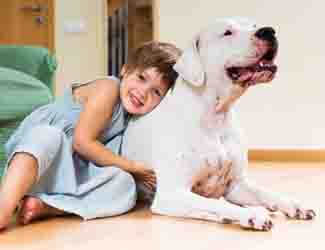
The Dogo Argentino is great with both adults and children, though not so great around other animals. The breed is very protective of its family members and will even develop its own role as the family watchdog to keep your home safe.
The only issue might be for young or overworked families. Since this dog needs a lot of exercise and mental stimulation throughout the day, it might not be the best breed if you spend the majority of the day at work or can’t make it outside for walks or playtime.
Though the breed can weigh up to 100 pounds, there’s generally no concern about safety when it comes to young children. The only issue you might experience is that the dog accidentally knocks the child over when attempting to play.
Can A Dogo Argentino Live In An Apartment?
The Dogo Argentino can thrive in any living arrangement, so long as you keep them entertained. Just remember that they tend to get a little destructive when they spend too much time alone, so it wouldn’t be unusual to come home see the wood chairs chewed up or the carpet torn.
What you do need to make sure of is that your
lease accepts this breed of dog. Many leases ban large breed dogs, and the
“bully” breeds, and the Dogo Argentino is often lumped into this group.
Breeching your signed lease and bringing one on the property could immediately
terminate your lease and force you out.
Are Dogo Argentinos Hypoallergenic?
According to the American Kennel Club, the Dogo Argentino is not on the list of “hypoallergenic” dogs. That’s likely because there are incredibly strict guidelines for becoming a hypoallergenic breed, and there’s no such thing as a purely hypoallergenic breed, to begin with!
The dog does shed a lot. Along with the excess
hair that falls out are some dead skin cells. This is what triggers allergic
reactions in those allergic to dogs. So, this dog breed wouldn’t make a great
fit in your house if you have allergies.
Can A Dogo Argentino Live In Cold Or Hot Weather?
This breed has a very thin coat and
incredibly thin hair. This is great for keeping them cool in the summer (i.e.,
Their home country of Argentina), but it also means they don’t do all that well
in the cold weather. So, the Dogo Argentino does much better in
warmer weather.
What Do You Feed A Dogo Argentino?
The Dogo Argentino is considered a large breed dog, which means you’re going to have to feed them a ton of food to keep them happy and healthy. With such high activity levels, it also means that they need a few extra calories a day to keep up with their exercise schedule.
High protein food is the best for this breed. Food specifically for large breed dogs is even better! Though your pooch always seems to have an unrelenting appetite, large breed dogs do have plenty of health conditions that are associated with being overweight.
Try to feed your dog the recommended amount to
avoid painful joint conditions like hip dysplasia and elbow dysplasia. It also
would be a good idea to work some joint supplements like glucosamine and
chondroitin into their diet to keep their joints healthy
too.
Facts About Dogo Argentino...Final Thoughts
The Dogo Argentino was a breed that was first developed in Argentina in 1928. When the breed was being created, several large breed dogs (like the Boxer, Mastiff, and Bulldog) were combined to make a dog that was great at hunting, powerful, and agile. In the process, the Dogo Argentino developed the following traits:
- Can sometimes jump up to six feet high
- Can sprint up to 25 miles per hour
- Can hunt large game like boar and mountain lions
- Incredibly loyal to its own family
- Intelligent enough to learn new skills and command quickly
Return to the top of this Facts About Dogo Argentino page

About the Author...
Ken Alden, a dedicated Mastiff owner for over eight years, is acclaimed for his expertise in care, grooming, and training. Read more About Me and my dog Shadow.
- Mastiff Guide Home ›
- Dogo Argentinos Dog Info ›
- Facts About Dogo Argentino
